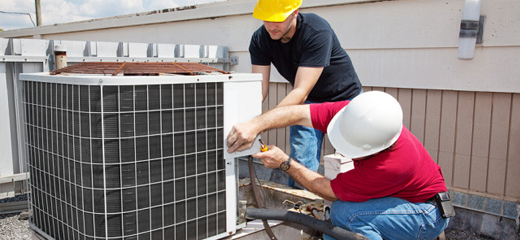
Installation and Maintenance of Multi-Zone Air Conditioning Systems
Multi-zone air conditioning systems (VRV/VRF) are a modern solution for maintaining a comfortable indoor climate in large buildings. They efficiently distribute cold and heat, reducing energy consumption. Let’s look at the installation process and the technological and service maintenance aspects.
Features of Multi-Zone System Installation
-
Flexibility and Scalability
-
Suitable for various types of buildings, from apartments and offices to large shopping centers and industrial facilities.
-
Ability to connect multiple indoor units (up to 250 in a single system).
-
Various types of indoor units (cassette, ducted, wall-mounted, ceiling-mounted, etc.), allowing adaptation to any architectural design.
-
-
Equipment Placement
-
Outdoor units can be installed on the roof, in the basement, in a technical room, or on the building facade.
-
The piping length can reach 100-150 meters, with a height difference of up to 50 meters.
-
-
Space-Saving and Easy Installation
-
Unlike central air conditioning systems, multi-zone systems do not require bulky air ducts.
-
The modular structure allows for step-by-step system expansion without shutting down the entire complex.
-
-
Automation and Control
-
Modern VRV/VRF systems feature built-in self-diagnostics and intelligent control.
-
Centralized management via dispatching systems and mobile applications.
-
Technological and Service Maintenance
Multi-zone systems are complex engineering structures that require regular technical monitoring to ensure uninterrupted operation and extend their service life.
Key Stages of Technical Maintenance
-
System Diagnostics
-
Checking the functionality of all indoor and outdoor units.
-
Monitoring the operation of compressors, fans, and electronic boards.
-
Analyzing temperature, pressure, and humidity sensors.
-
-
Cleaning and Preventive Maintenance
-
Cleaning filters, heat exchangers, and drainage systems.
-
Antibacterial treatment of indoor units.
-
Removing possible blockages in pipelines.
-
-
Refrigerant Control
-
Checking refrigerant levels and refilling if necessary.
-
Detecting leaks using specialized equipment.
-
-
Electrical Maintenance
-
Inspecting cable connections and grounding.
-
Measuring voltage and operating current.
-
-
Adjustment and Calibration
-
Regulating system parameters according to seasonal changes.
-
Updating the system control software.
-
Benefits of Regular Service Maintenance
-
Extends equipment lifespan (up to 25 years with proper care).
-
Reduces operating costs by optimizing energy consumption.
-
Prevents emergency situations and costly repairs.
-
Maintains high air quality inside the building.
General Steps of VRV System Maintenance:
-
Grounding check
-
Fan operation monitoring
-
Air conditioning system calibration
-
Adjustment of operating parameters and temperature settings
-
Measurement of voltage, startup, and operating currents
-
Drainage system inspection
-
Filter replacement
-
Inspection of control boards
-
Anti-fungal cleaning of all internal VRV modules
-
Checking for refrigerant leaks
-
Refrigerant refilling and internal pipeline pressure testing
-
Configuring automatic operation modes
Regular VRV system maintenance, including servicing individual internal units,
can extend the system’s lifespan by 5-10 years compared to basic self-diagnostics.
It is crucial not to wait for a breakdown but to periodically check for potential issues.
This is why scheduled service maintenance is necessary.
Additionally, timely maintenance significantly reduces repair costs.
